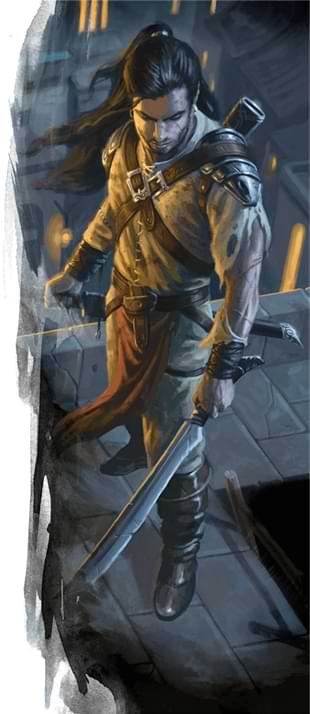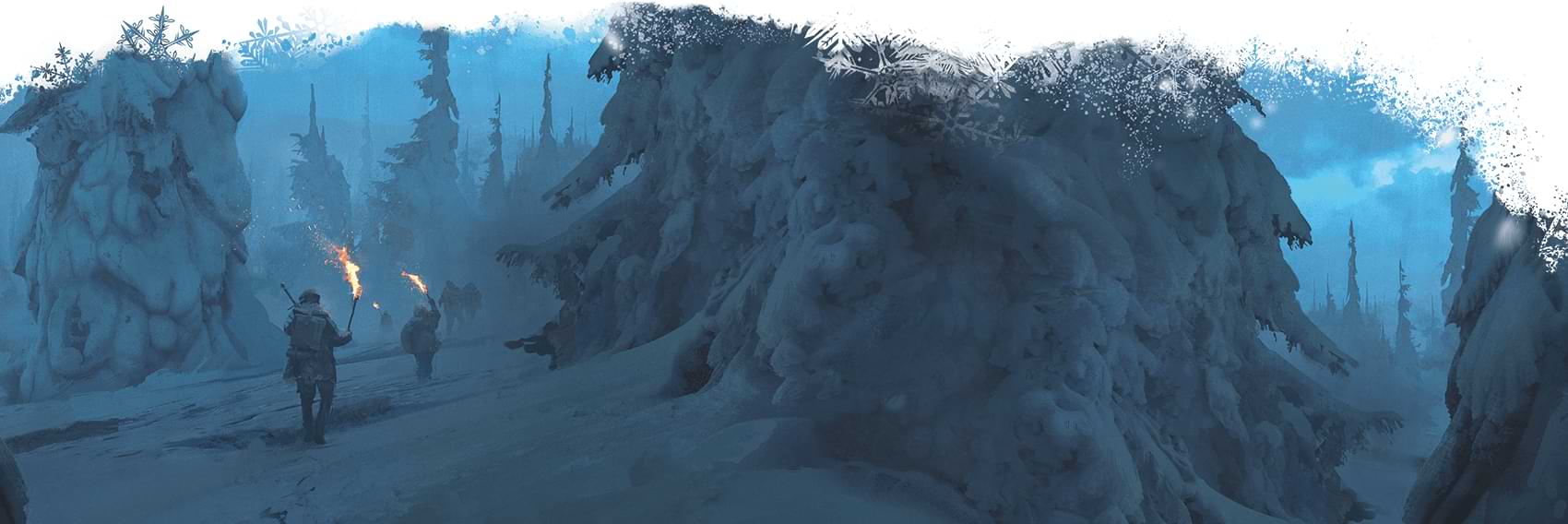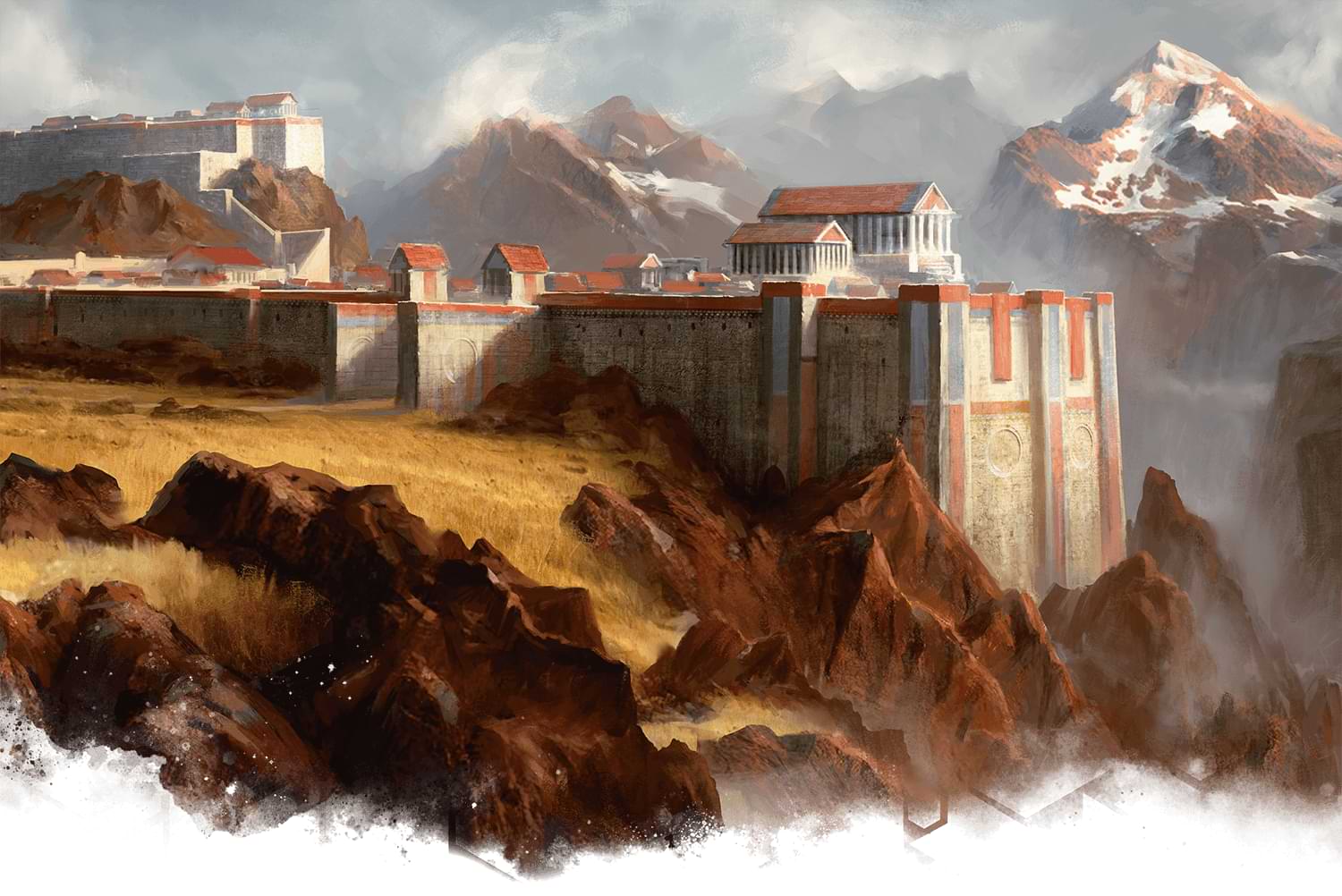Dungeons & Dragons is a game where you can play as heroic characters as they storm the tower of a lich seeking to ascend to godhood or traverse the multiverse in search of an ancient relic. But, what if you’re looking for a play experience that’s more down to earth? Whether you want to play in a slow-burn political thriller full of alliances and assassinations, or a sprawling journey across the rugged scenery of New Zealand, a low magic campaign might be right for you.
In this article, we'll get into the nitty-gritty of running a low magic campaign that will immerse and thrill your players!
What Is a Low Magic Campaign?
 Low magic refers to subsections of fantasy where the fantastical elements of the genre appear less often when compared to heroic fantasy (aka traditional D&D). There's no exact criteria for low magic fantasy settings, though in D&D terms running a low magic campaign could imply:
Low magic refers to subsections of fantasy where the fantastical elements of the genre appear less often when compared to heroic fantasy (aka traditional D&D). There's no exact criteria for low magic fantasy settings, though in D&D terms running a low magic campaign could imply:
- There are no non-human races or a few non-human races that live on the fringes of human society
- Magic and magical items are exceedingly rare, and the typical commoner will likely not encounter them in their lifetime
- Monsters and gods are all but myths to the general population
Player Classes in Low Magic Settings
In these types of settings, nonmagical martial classes like barbarians, fighters, and rogues are much more common than spellcasters, both for players and the enemies they face. Druids, monks, paladins, and rangers may appear, but they will be quite rare and usually hail from locations far from civilization. The supernatural abilities these classes tote will likely be pared down, whether by coming up with a nonmagical way to describe them or replacing them with mundane abilities.
Classes that revolve around manipulating the universe's fundamental forces, such as bards, sorcerers, warlocks, and wizards, or by channeling divine power, such as clerics, are extraordinarily rare in these settings, if they are included at all.
Monsters in Low Magic Settings
In low magic settings, the party's main opposition will likely be humans with competing agendas. Depending on your setting, the party could also face off against monsters, though they'd be less common than in heroic fantasy settings. Monsters that could suit a low magic setting include goblins, oversized beasts like giant spiders, and even bugbears, if you prefer that classic D&D flair. When you're looking to up the ante, giants and even dragons are an option.
At the end of the day, just about any monster can be included in a low magic setting. What matters is the monster's impact on the world at large. In some cases, these monsters haven't been seen for generations and are nothing but an old wives' tale before making a resurgence. In others, these monsters are treated as commonplace and don't break the grounded feel of the setting.
Before You Start, Talk to Your Table
Playing in a low magic scenario can be a jarring departure for players that have come up with a traditional D&D experience. Before putting in the work to plan your campaign, make sure you and your table are on the same page with what to expect.
How to Set Up Your Low Magic Campaign

Beyond limiting character options, magic, and monsters, it might be necessary to adjust the core rules of the game in order to provoke a feeling of realism in your low magic setting. Below, we provide some optional rules to help ground the fantastical elements of the D&D system.
Gritty Realism
Gritty Realism is an optional rest variant in the Dungeon Master's Guide that slows down the recovery of hit points and features. Under Gritty Realism, it takes 8 hours to complete a short rest and 7 days for a long rest. This is meant to make players think twice about diving into combat and encourages them to spend more time in the safety of civilization.
This variant works particularly well for political campaigns as the players will have plenty of time for negotiating and espionage while they wait for their abilities to recharge and hit points to regenerate.
Character Advancement
When looking to run a more grounded campaign, it's best to keep characters in the early tiers of play. Levels 1-10 are a sweet spot for low magic games because characters won't have massive pools of hit points or access to high levels spells, which can help keep the stakes high and make gameplay more grounded.
If you're running a long-term game and don't want players to feel stuck in their characters, consider alternate ways of leveling up. For example, if you wanted to cap magic in the world at 3rd level spells, you could allow your party to level normally to 6th level. After that, class features and spell slots wouldn't progress, but characters would be able to choose a feat or alternate subclass feature when they level up.
In terms of rewarding players beyond leveling up, the Dungeon Master's Guide suggests that characters in low magic campaigns should only have one uncommon magic item by the time they reach 11th level. This means you'll have to be creative when handing out loot, as you can easily break the immersion of a low magic setting by handing out powerful gear. Yeah, players might not be getting armor of invulnerability, but perhaps they can be rewarded with a deed to a castle or a boat and crew.
Travel and Exploration
Low magic settings are excellent places to run sprawling, adventurous campaigns. Traveling without the aid of magic means that surviving in the wild becomes a real challenge that won't be easily solved with a casting of goodberry or circumnavigated by teleporting away.
Before running a low magic setting, I'd suggest checking out the Wilderness Survival section of the Dungeon Master's Guide, which provides rollable tables for weather, and rules for wilderness hazards, foraging for food, and becoming lost.
The Finer Details
Using meticulous variant rules that are mostly ignored, like encumbrance and tracking your food and inventory, are more ways to bring realism to low magic campaigns. Obviously, keeping a running tally of your arrows doesn't sound like the most exciting experience, but the real fun comes in when you're lost in a dark forest and only have 5 arrows left in your quiver. Will the party have to backtrack to civilization to restock? Or will they have to keep an extra watch while you scavenge for supplies to make your own? And oh, is that a cluster giant wolf spiders scuttling your way?
If you're okay with magic users in your campaign but want to find ways to restrict their abilities, you could also remove the component pouch or other tools that allow players to ignore some material components when casting spells. That way, casters aren't only restricted by the spell slots they have but also by what materials they were able to scrounge together at the last village.
Creating Your Setting

There are specific campaigns that lend themselves to low magic settings. Believe it or not, when all-powerful spellcasters have the ability to teleport, resurrect the dead, and reshape the world around them, it can drastically change the type of story that can be told.
Low magic campaigns are well-suited to historical fantasy settings because the lack of fantastical elements makes the world you're playing in feel more grounded and realistic. Here are just a few historical periods that can create ideal settings for low magic campaigns:
- Middle Ages: Though the medieval setting is explored thoroughly in traditional D&D, it can look vastly different in low magic settings where magic and monsters are not as prevalent. Those living in this period experienced plenty of hardships, from war to famine and disease. Without access to magic, these issues can threaten society as a whole and may need a group of adventurers to go on an epic quest to find the key to their resolution.
- Ancient Greece: A time of epic adventures, tales of gods and monsters, and conflict. Exploration, especially by sea, will be a substantial pillar of running a low magic setting in ancient Greece. There will also be the opportunity to embark on heroic quests to hunt mythical monsters.
- Feudal Japan: With the failing influence of the emperor and leaders of different armies controlling smaller pieces of land, this period makes a stellar backdrop for low magic settings. The story could revolve around a party of warriors attempting to swing their faction's influence with shrewd negotiation or prowess in combat.
How Low Can You Go?
Low magic campaigns are an interesting departure from traditional D&D and can breathe fresh life into a table that's tired of counterspell battles. These settings alter the focus of D&D, reducing the space that magic occupies and allowing for strategy, roleplay, and exploration to flourish. So, what are you waiting for? It's time to go on an adventure!
Mike Bernier (@arcane_eye) is the founder of Arcane Eye, a site focused on providing useful tips and tricks to all those involved in the world of D&D. Outside of writing for Arcane Eye, Mike spends most of his time playing games, hiking with his girlfriend, and tending the veritable jungle of houseplants that have invaded his house.








-
View User Profile
-
Send Message
Posted Sep 5, 2022Lowest Magic Campaign: Barbarians only, set in prehistoric times. Characters might unlock arcane knowledge such as bronze weapons or math at high tiers of play. The greatclub reigns supreme.
-
View User Profile
-
Send Message
Posted Sep 5, 2022Seems like missing text around:
I love the idea of trying out a low magic setting, and it can help to take players out of their comfort zone of relying on magic to solve all of their problems. I might try a one-shot first though, see what works, or what ends up being more frustrating than fun.
-
View User Profile
-
Send Message
Posted Sep 5, 2022I actually think that is a really cool idea!
-
View User Profile
-
Send Message
Posted Sep 5, 2022I love low magic settings, or at least settings where magic isn't such an everyday commodity that magic items grow on trees and the gods step in to solve your every little problem.
-
View User Profile
-
Send Message
Posted Sep 5, 2022Part of me really wants to try a low magic campaign, another part of me knows I like my escapism big and bombastic…
-
View User Profile
-
Send Message
Posted Sep 5, 2022I think it's really important to note the difference between low-magic settings and low-fantasy settings. Non-human races can coexist with humans just as they would in a high-magic campaign, and monsters such as giant and dragons may be able to be just as common as they normally are, without affecting the presence of magic in a setting. A low-magic setting really only brings down the levels of spells, magic items, and magical effects, but fantastical races and creatures can remain the same.
-
View User Profile
-
Send Message
Posted Sep 5, 2022Other low magic settings you didn't mention:
Steampunk/Dieselpunk: this is where artificers shine and where magic can be easily turned into brass technology. Get lost in distant worlds where technology is marvellous. Examples: His Dark Materials, Dishonored, Full Metal Alchemist, Bioshock.
Urban fantasy: the world we live in has so many mysteries and legends that can turn out to be true. Cryptozoology, Feys, monsters that hunt you in the dark to wear your skin. Ancient aliens: it's all true, I'm an expert just like you... Examples: Gravity Falls, Spiderwick, Percy Jackson, Jurassic Park.
Sci-fi: maybe Jedi knights are the monks of a long time ago in a place very far away, but consider the amount of magic needed in this setting: none! Fly through space battles and visit distant worlds, without even the need of a spelljammer! Examples: Star Wars, Blade Runner, Dune, Alien...
-
View User Profile
-
Send Message
Posted Sep 5, 2022To be honest, the longest running campaign I DM is based on His Dark Materials and its low magic approach is what really makes it interesting. That, and talking armored bears.
-
View User Profile
-
Send Message
Posted Sep 5, 2022Why specifically non-humans being restricted for a low magic campaign? Should orcs or halfings (hobbits) been cut off from LotR due to magic being more subtle in that setting? A gritty version of tabaxi from the jungles, or desert elves similar to the ones in Dark Sun sound fun to include with few to no magical elements to them and their societies.
-
View User Profile
-
Send Message
Posted Sep 5, 2022Love this concept. Owes itself to an exploration of traditional folk-lore and fairy tales.
-
View User Profile
-
Send Message
Posted Sep 5, 2022These are all really interesting. I like magic and escapism too much to try these myself, but all neat ideas.
-
View User Profile
-
Send Message
Posted Sep 5, 2022Awesome
-
View User Profile
-
Send Message
Posted Sep 5, 2022One thing I would do in a low magic 5e campaign is either limit the casting of cantrips or remove them until higher levels.
Since 5e class are not in the sweet spot that I think of for low magic I would also design new classes for the PC's with some options if they rolled high that were more like 5e classes.
-
View User Profile
-
Send Message
Posted Sep 5, 2022My campaigns tend to be like this. If everything is fantastic, then nothing is fantastic.
-
View User Profile
-
Send Message
Posted Sep 6, 2022Well said!
-
View User Profile
-
Send Message
Posted Sep 6, 2022Tolkien's wizards always seemed to me like they'd be mechanically druids in D&D.
-
View User Profile
-
Send Message
Posted Sep 6, 2022The best way to run a dnd campaign ;)
Base things on historical events, make magic users rare, add cultural real-world mythology along with a sprinkling of magic items/monsters = perfection.
Im glad they finally did a article on these types of campaigns as it seems most typical dnd campaigns are just filled to the brim with magic and just feel bland and overdone. Either campaign style is viable but low magic campaigns make the game so much more tense and challenging when you realize your problems (getting food, death or travel) cant be fixed by the simple hand wave of a spellcaster and thus the players have to use more imaginative means than just MagicTM. Really puts the joy in the journey when you do it right.
-
View User Profile
-
Send Message
Posted Sep 6, 2022I love playing in low fantasy and gritty realism settings. The recommendation I have is that the old 3.5 E6 rules be amended and adapted IF you allow characters to be spellcasters. It limits their top end power. Also if you allow higher level spells tweak them to require components that are rare, dangerous and expensive. Another thing we do to make spell casting in low magic and gritty settings is to require the caster whenever a level 1 or higher non-ritual spell is cast, to roll a d20 and if they roll a 1 something bad happens. You could come up with custom consequences or use the wild magic table. Just my opinion, I could be wrong.
-
View User Profile
-
Send Message
Posted Sep 6, 2022Some races like, Tieflings, Genasi and even Elves have an inherent magic vibe to them and literal spells. They're magic, soyou can have them in low magic but they need to be low. I.e limited in number or kind.
It probably doesnt matter much how you treat the non magical races though. Like orcs, Goliaths and tabaxi